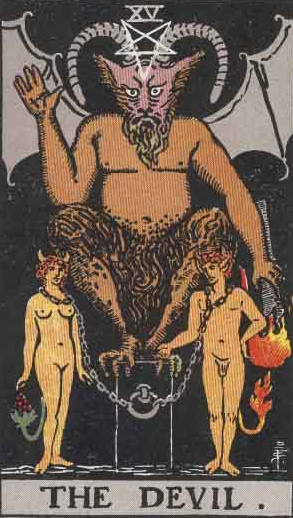
Who or what the devil is The Devil?
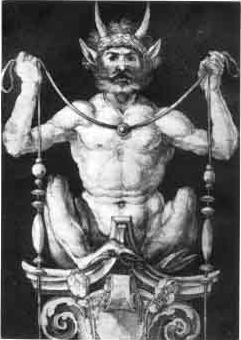 He is a construct of the monotheistic religions. When all you’ve got is one god and he’s perfect, how do you account for all evil that “lurks in the heart of man?”** You blame it on The Devil, of course. You make him the source of all evil, whose sole purpose is to corrupt god’s perfect creation (that would be us) through lies and deception. Problem solved.
He is a construct of the monotheistic religions. When all you’ve got is one god and he’s perfect, how do you account for all evil that “lurks in the heart of man?”** You blame it on The Devil, of course. You make him the source of all evil, whose sole purpose is to corrupt god’s perfect creation (that would be us) through lies and deception. Problem solved.
The pagan religions that predate monotheism have lots of bad guys, but, unlike The Devil, they are not totally evil archenemies of the human race. They are often regarded as the black sheep of the family, but they are still a part of the family or pantheon of gods, They are tricksters, like Loki, Hermes, and Coyote—untrustworthy gods who delight in teaching humanity lessons through deception. Or wild ones, like Dionysus and Pan, who give the gift of divine ecstasy. Some, like Set, who killed his brother, Osiris, chopped him into 14 pieces and scattered him up and down the Nile, commit crimes out of greed, jealousy, or anger. They do horrible, nasty things, but they aren’t opposed to all the other gods, and their ultimate purpose is not the destruction of humanity. They are the movers and shakers who rejoice in overthrowing the status quo.
In Judaism, which had its beginnings around 2000-1500 BCE, The Devil is called Satan or ha-satan, which translates from Hebrew as “adversary” or “someone who brings up the other side of the argument”—similar to the pagan trickster gods. His only appearances in the Old Testament are in I Chronicles and in the Book of Job, which were written more than a thousand years BCE. (see reference) In the story of Job, God points out his servant, Job, to Satan as a righteous man. Satan replies that Job is only righteous because God has blessed him with prosperity, but if everything were taken away from him he would curse God’s name. God rises to the bait and gives Satan permission to strip Job of his family, his wealth, and his health. Of course, Job remains true to God or they wouldn’t have put it in the Bible, but the thing to note here is that God and Satan are on cordial speaking terms and Satan doesn’t need a “devil’s advocate,” since he is hanging out with God and able to raise his own uncomfortable questions. The Old Testament Satan doesn’t have horns and a tail or even cloven hooves. And he isn’t evil. And even though there is a Jewish underworld called Sheol, a place of darkness, cut off from God, Satan isn’t in charge of it.
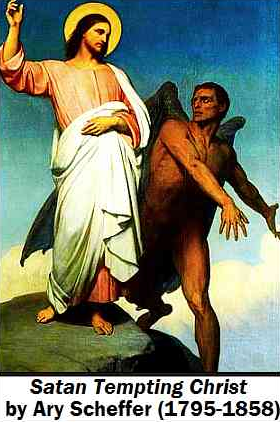 Over a thousand years later, the Christian New Testament paints Satan in far darker colors and begins to sketch the image we have of him today. He is the tempter, who came to Jesus in the wilderness and tested his strength of character and faith (Mathew 4:1). And unlike the Old Testament Satan, he did this presumably without God’s permission. According to Wikipedia, The Book of Revelation (12:9, 20:2), is the first record of anyone connecting Adam and Eve’s serpent and their subsequent fall with the devil. The serpent in Genesis is simply described as a “more subtle than any other wild creature” (Italics are mine) (Genesis 3:1, Revised Standard Version). The New Testament books also refer to him as “the dragon” and “the old serpent” (Revelation 12:9, 20:2), the deceiver (Revelation 12:7), “the prince of this world” (John 12:31, 14:30), “the prince of the power of the air, the spirit that now worketh in the children of disobedience” (Ephesians 2:2), and “the god of this world” (2 Corinthians 4:4). Revelation 13:11-18 and 19:19-21 refer to Satan as “the beast” and mention that he has horns. They also mention the number of the beast, which is 666, and the “mark of the beast” that he puts on his followers. “No one can buy or sell unless he has the mark.” This mark is not described, but many medieval witch hunters were sure they knew what it looked like. Revelation 20:7-15 states that in the “second death”, Satan and anyone whose “name was not found written in the book of life” will be “thrown into the lake of fire.”
Over a thousand years later, the Christian New Testament paints Satan in far darker colors and begins to sketch the image we have of him today. He is the tempter, who came to Jesus in the wilderness and tested his strength of character and faith (Mathew 4:1). And unlike the Old Testament Satan, he did this presumably without God’s permission. According to Wikipedia, The Book of Revelation (12:9, 20:2), is the first record of anyone connecting Adam and Eve’s serpent and their subsequent fall with the devil. The serpent in Genesis is simply described as a “more subtle than any other wild creature” (Italics are mine) (Genesis 3:1, Revised Standard Version). The New Testament books also refer to him as “the dragon” and “the old serpent” (Revelation 12:9, 20:2), the deceiver (Revelation 12:7), “the prince of this world” (John 12:31, 14:30), “the prince of the power of the air, the spirit that now worketh in the children of disobedience” (Ephesians 2:2), and “the god of this world” (2 Corinthians 4:4). Revelation 13:11-18 and 19:19-21 refer to Satan as “the beast” and mention that he has horns. They also mention the number of the beast, which is 666, and the “mark of the beast” that he puts on his followers. “No one can buy or sell unless he has the mark.” This mark is not described, but many medieval witch hunters were sure they knew what it looked like. Revelation 20:7-15 states that in the “second death”, Satan and anyone whose “name was not found written in the book of life” will be “thrown into the lake of fire.”
Revelation 12:7 describes a war in heaven in which the archangel Michael casts Satan and his angels out of heaven. This same verse plainly states that they fall to earth—not hell (which I don’t think has been invented yet), or Hades, or the Underworld. The Book of Revelation is a prophecy to John of Patmos by Jesus Christ. Modern bible commentaries usually agree that The Book of Revelation describes events that will happen in the future, not the origin of Satan or The Devil. However, the intra-text of the Catechism of the Catholic Church (published in 2006) states in no uncertain terms that Satan and his angels were cast out of heaven before the fall of man. It also says that the serpent who tempted Adam and Eve was, indeed, Satan, who had vowed to corrupt God’s perfect creation.
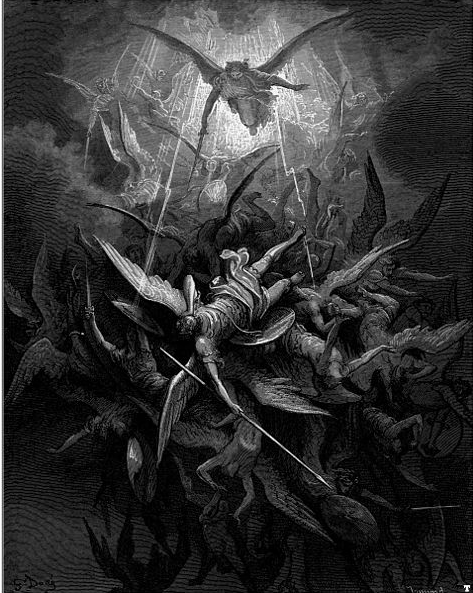
A group of Jewish writings called The Life of Adam and Eve, tells a similar story, with Satan being cast out of heaven before the fall and vowing to corrupt God’s newly created race. Scholars widely agree that the original Life of Adam and Eve was written around the first century CE, the same century that produced the Book of Revelation with its prophecy of war in heaven.
John Milton (1608–1674) recognized a great story when he heard one, and wrote his own version that pretty much agrees with the Catholic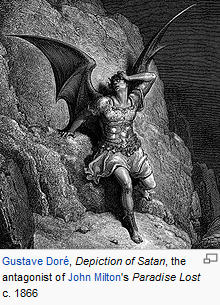 Church. In his greatest work, Paradise Lost, Satan and his angels rebel against God before the creation of man. God casts him and a third of the angels in heaven down into Tartarus (the other versions have him cast down to earth), creates the world and gives humanity dominion over it. Satan vows to corrupt God’s perfect creation, and everything goes pear-shaped—actually apple-shaped.
Church. In his greatest work, Paradise Lost, Satan and his angels rebel against God before the creation of man. God casts him and a third of the angels in heaven down into Tartarus (the other versions have him cast down to earth), creates the world and gives humanity dominion over it. Satan vows to corrupt God’s perfect creation, and everything goes pear-shaped—actually apple-shaped.
Over six hundred years after the birth of Christ, Muhammad revealed his vision of God in the Qur’an, which devout Muslims believe to be the true word of God. The Qur’an says that the Devil is a jinn, which are beings that God created out of “smokeless fire”. His name is Iblis, and he rebelled against God, who threw him out of paradise. He is the self avowed enemy of humanity and uses deception and lies to cause humans to disobey God. On Qiyamah, or Resurrection Day, Iblis will be thrown into Jahannam, or hell along with all of those he has deceived. The Qur’an describes the punishments in Jahannam as follows: the burning of skin, only to be replaced for reburning; garments of fire will be worn, and boiling water will scald the skin and internal organs; faces on fire; lips burnt off; backs on fire; roasting from side to side; faces dragged along fire; bound in yokes then dragged through boiling water and fire. Sound familiar?
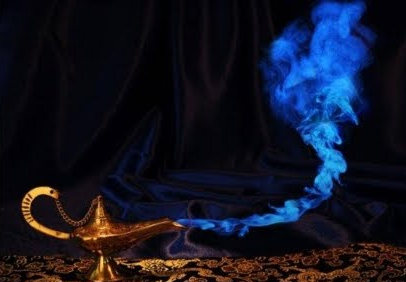
It is interesting to note that in the Islamic faith, The Devil belongs to the race of jinn, who are sometimes pictured with horns. Jinn, angels, and humans, are the three sentient creations of Allah, which implies that the jinn were around way before the Qur’an was a gleam in Muhammad’s eye. They live in a parallel world to ours and cannot be seen by us, but are capable of moving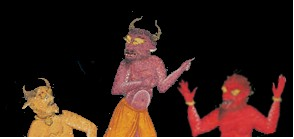
The Devil is now an evil creature of fire and he has horns and I’m beginning to get a whiff of brimstone. But what about his goat legs, tail, and cloven hooves?
To be continued…
**from the introduction to The Shadow radio program
*Hoyland, R. G., Arabia and the Arabs: From the Bronze Age to the Coming of Islam.


6 thoughts on “The Major Arcana and the Hero’s Journey, The Devil, Part I”
I would try to merge the arcana with the advanced hero’s journey at http://www.clickok.co.uk/index4.html instead of Campbell’s / Vogler’s basic version, which is far too simplified.
Thanks for the info. Great web page.
This is a great tool for writers. What the authors have done is take Vogler’s basic 12 steps from Old World to New World to the Ordeal, to the Return with the Elixir and expanded each step to include all the story possibilities in each. For instance, the website gives the example of two points that the authors have added to the Old World step.
*The hero/ine must stay in the Old World for his own protection
*The hero/ine must stay in the Old World because of repressive elements.
I don’t own this package, so I can’t say for sure, but they probably give the writer lots of other reasons for the Hero/ine staying in the Old World. The writer can then pick and choose which reason or which combination of reasons he wants to use in his story.
And you’re right, each Major Arcana card would correspond to many of these points throughout the story arc. It would be fun to see how they match up. But for the purposes of this blog, I think I will operate under the Keep It Simple Stupid strategy and stick with Vogler.
Just for fun, I thought you might enjoy this.
http://sherlockiantarot.tumblr.com/
xoxo
Suebee
What fun! He’s done a great job pulling together archetypes and symbolism. His shades his meanings a bit differently than I would, but that’s just personal style. Have you seen this Steampunk Tarot? It’s exquisite.
I haven’t seen a steampunk one. Sounds cool though! Do you have a link?
xox
Oops. Thought I put the link in my comment. It’s http://steampunktarot.com/